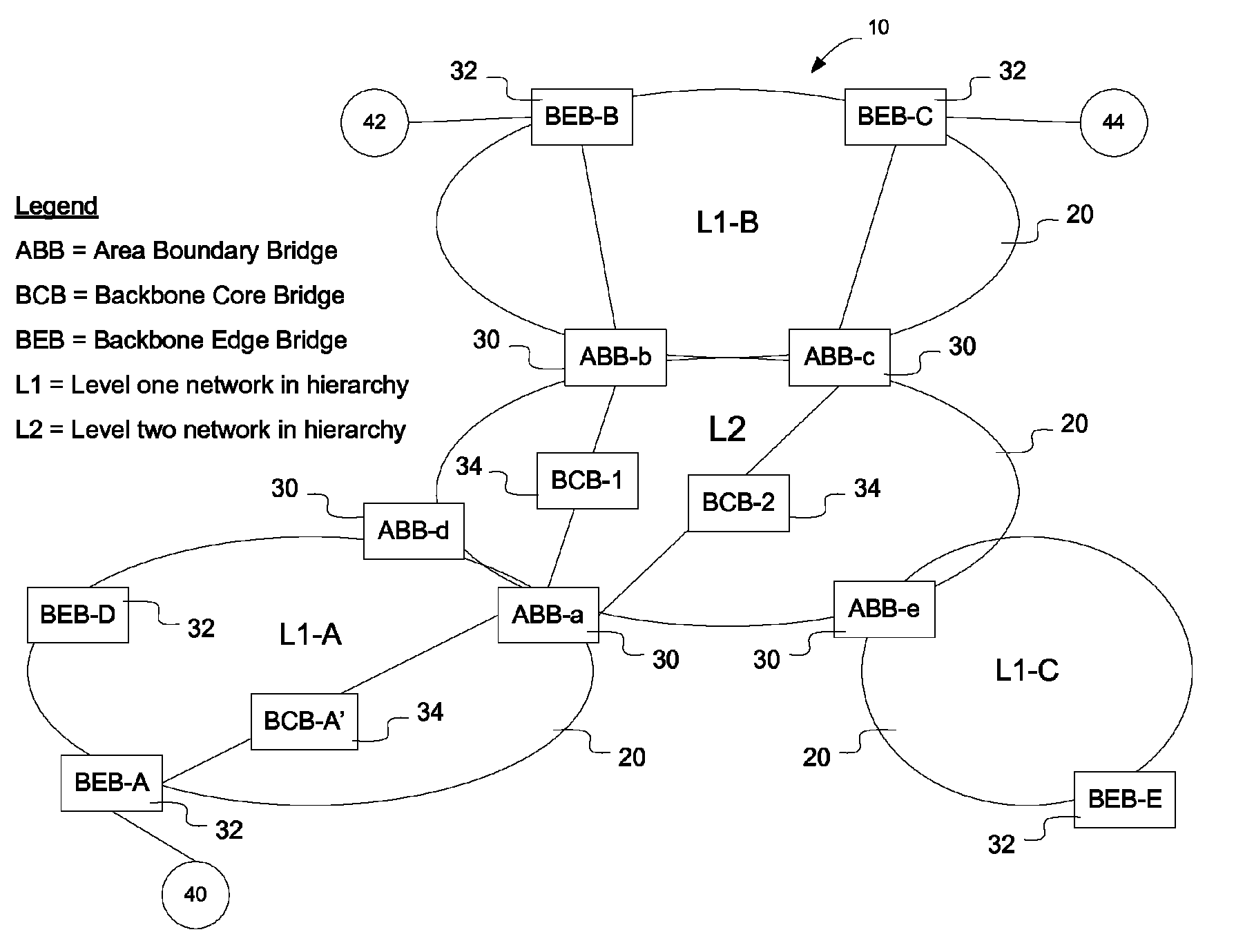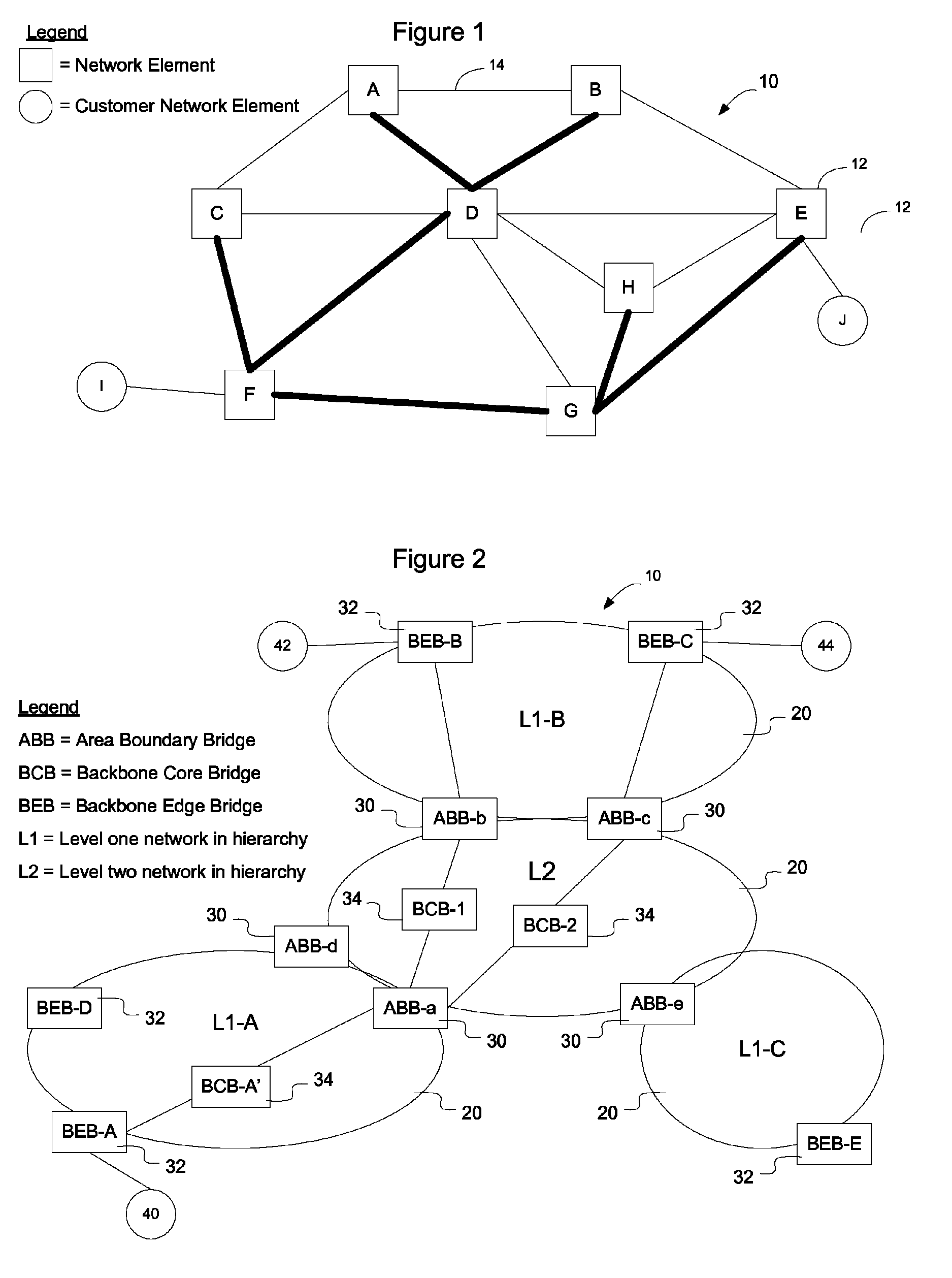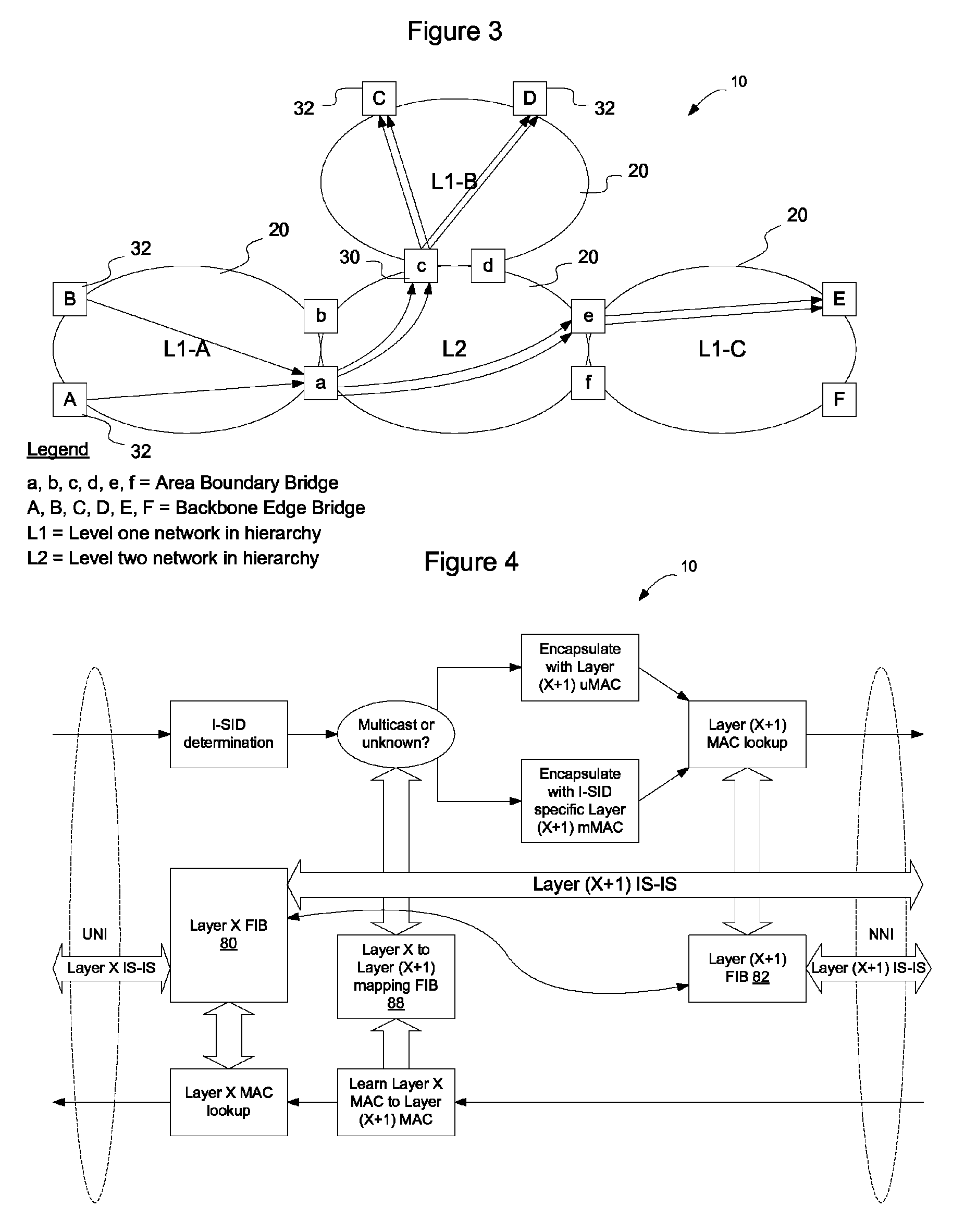Method and apparatus for exchanging routing information and the establishment of connectivity across multiple network areas
a routing information and network area technology, applied in the field of ethernet networks, can solve the problems of over-utilization of links that were on the spanning tree, non-utilization of links that weren't part of the spanning tree, etc., and achieve the effect of facilitating multiple area operation
- Summary
- Abstract
- Description
- Claims
- Application Information
AI Technical Summary
Benefits of technology
Problems solved by technology
Method used
Image
Examples
Embodiment Construction
[0018]Using a link state protocol with 802.1ah to control the Ethernet backbone network enables the Ethernet network to be scaled from the LAN space to the MAN, and to the WAN, by providing more efficient use of network capacity with loop-free shortest path forwarding. Rather than utilizing a learned network view at each node by using the Spanning Tree Protocol (STP) algorithm combined with transparent bridging, in a link state protocol controlled Ethernet network the bridges forming the mesh network exchange link state advertisements to enable each node to have a synchronized view of the network topology. This is achieved via the well understood mechanism of a link state routing system. The bridges in the network have a synchronized view of the network topology, have knowledge of the requisite unicast and multicast connectivity, can compute a shortest path connectivity between any pair of bridges in the network, and individually can populate their forwarding information bases (FIBs...
PUM
 Login to View More
Login to View More Abstract
Description
Claims
Application Information
 Login to View More
Login to View More - R&D
- Intellectual Property
- Life Sciences
- Materials
- Tech Scout
- Unparalleled Data Quality
- Higher Quality Content
- 60% Fewer Hallucinations
Browse by: Latest US Patents, China's latest patents, Technical Efficacy Thesaurus, Application Domain, Technology Topic, Popular Technical Reports.
© 2025 PatSnap. All rights reserved.Legal|Privacy policy|Modern Slavery Act Transparency Statement|Sitemap|About US| Contact US: help@patsnap.com



